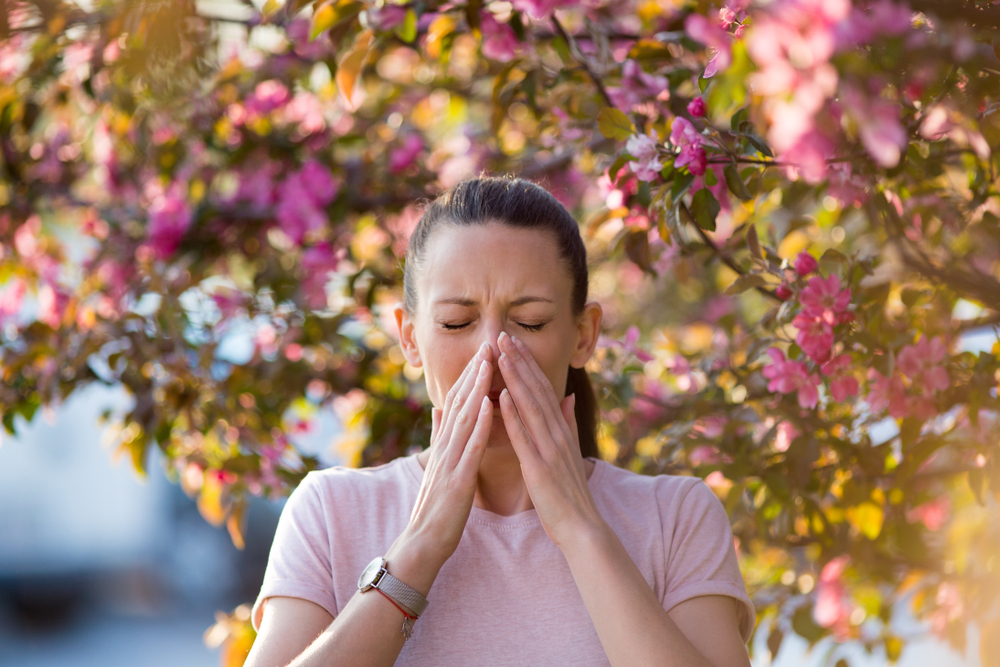The Most Common Triggers of Seasonal Allergies

As spring and fall seasons arrive, many people experience symptoms of seasonal allergies, such as sneezing, runny nose, and itchy eyes. Seasonal allergies are a common problem in Florida, particularly in April, May, and September when pollen counts peak.
Environmental factors, such as pollen, mold, and dust mites, can trigger these allergies. In this blog, we will discuss the most common triggers of seasonal allergies and provide you with valuable tips to help you navigate allergy season. Take a look!
Seasonal Allergies: What Are They?
Seasonal allergies, also known as hay fever or allergic rhinitis, occur when your immune system overreacts to normally harmless environmental substances, such as pollen, mold, and dust mites.
This overreaction results in a range of symptoms, including sneezing, itching, runny nose, and watery eyes. While these symptoms may not be life-threatening, they can significantly impact your quality of life.
Symptoms of Seasonal Allergies
Recognizing the symptoms of seasonal allergies is essential for proper management and treatment. While each person may experience different symptoms, some of the most common signs of seasonal allergies include the following:
- Sneezing: Frequent sneezing is a typical reaction to allergens as your body tries to clear them from your nasal passages.
- Runny or stuffy nose: Allergens can cause inflammation and irritation in your nasal passages, leading to a runny or congested nose.
- Itchy, watery eyes: Allergens can irritate the conjunctiva, the thin membrane covering the eye’s surface, causing itching and watering.
- Itchy throat and palate: Your throat and the roof of your mouth can also become itchy due to allergens, leading to discomfort.
- Coughing and wheezing: Allergens can also irritate your airways, causing you to cough and wheeze as your body tries to clear the irritants.
- Sinus pressure and headaches: The inflammation in your nasal passages can lead to sinus pressure and headaches.
- Dark circles under the eyes: Also known as “allergic shiners,” these dark circles can result from congestion in the small blood vessels beneath the skin around your eyes.
If you experience any of these symptoms during allergy season, it is essential to consult your healthcare provider for an accurate diagnosis and appropriate treatment plan.
The Top 3 Triggers of Seasonal Allergies
1. Pollen.

The most common trigger of seasonal allergies is pollen. Pollen comes from various plants, including trees, grasses, and weeds.
In Florida, pollen counts tend to be the highest during the spring and fall months. This is because many plants release pollen during their respective blooming seasons, increasing pollen concentration in the air. When inhaled, pollen can cause an allergic reaction, leading to sneezing, runny nose, and itchy eyes.
Some of Florida’s most common pollen-producing plants include oak, pine, cedar, and ragweed. It is essential to keep track of pollen counts in your area to help you manage your seasonal allergies effectively. You can do this by checking local news sources or using websites and apps that provide pollen count information.
Tips for Reducing Exposure to Pollen:
Reducing exposure to pollen is crucial in managing seasonal allergies. Here are some tips to reduce exposure to pollen:
- Check the pollen count daily, and stay indoors during peak pollen hours.
- Keep windows and doors closed during high pollen counts.
- Use air conditioning instead of opening windows.
- Wear a pollen mask when working outdoors.
- Shower and change clothes after spending time outdoors to remove pollen from your hair and clothing.
2. Mold.

Mold is a type of fungus that grows in damp and humid environments. It releases spores into the air that can trigger allergic reactions when inhaled. In Florida, mold spores can be present year-round, but their levels increase during humid months. Symptoms of mold allergies can include coughing, wheezing, and itchy eyes.
Keeping your living environment clean and dry is essential to reduce exposure to mold spores. This includes regularly cleaning damp areas and maintaining your home, using dehumidifiers, fixing leaks or water damage, and ensuring proper ventilation.
3. Dust Mites.

Dust mites are tiny insects that live in dust and feed on human skin cells. They are a less common trigger of seasonal allergies but can still cause significant symptoms. Dust mites thrive in warm, humid environments, making Florida a suitable habitat.
To minimize dust mites exposure, it’s crucial to maintain a clean home. This includes regular vacuuming, washing bedding and stuffed animals in hot water once a week, and using allergen-proof mattresses and pillow covers.
Tips for Reducing Exposure to Seasonal Allergy Triggers
Now that you know the most common triggers of seasonal allergies, here are some tips to help you reduce your exposure to them:
- Stay indoors on high pollen count days: To minimize your exposure to pollen, try to stay indoors when the pollen count is high, especially during the morning and evening hours when pollen levels are the highest.
- Keep windows and doors closed: Keeping windows and doors closed, especially during peak pollen season, can help prevent pollen from entering your home. Consider using air conditioning to maintain a comfortable indoor temperature.
- Use HEPA filters: High-efficiency particulate air (HEPA) filters can help remove pollen, mold spores, and dust mites from the air. Consider using HEPA filters in your air conditioning system and vacuum cleaner.
- Shower and change clothes after outdoor activities: Pollen can collect on your skin, hair, and clothing. To minimize your exposure, shower and change clothes after spending time outdoors.
- Limit exposure to damp areas: Avoid spending too much time in wet or humid areas, such as basements and bathrooms, to reduce mold exposure. Fix any leaks or sources of moisture in your home to prevent mold growth.
- Maintain your yard: Regularly mow your lawn and remove fallen leaves, as they can harbor mold spores and pollen. If you are particularly sensitive to pollen, consider wearing a mask while doing yard work or ask someone else to do it for you.
- Wash your pets: Pets can carry pollen, mold spores, and dust mites on their fur. Bathe and groom your pets regularly to minimize allergens, and keep them off your furniture and bed.
- Dry your laundry indoors: Hanging it outside can cause it to collect pollen and mold spores. To reduce exposure to these allergens, dry your laundry indoors or use a dryer.
Conclusion

Seasonal allergies can significantly burden your life, but understanding the most common triggers and taking steps to reduce your exposure can help you manage your symptoms more effectively. Maintaining a clean and dry living environment and implementing strategies to minimize allergen exposure will keep you and your loved ones more comfortable and safe during allergy season.
It’s important to note that while these tips can be helpful, they may not eliminate your symptoms. If you continue to experience symptoms despite taking preventive measures, it may be time to consult an allergist.
In conclusion, seasonal allergies can be a nuisance. Still, reducing your exposure to common allergens can alleviate your symptoms and improve your quality of life.
FAQs About The Most Common Triggers of Seasonal Allergies
1. What are seasonal allergies?
Seasonal allergies, also known as hay fever or allergic rhinitis, occur when the immune system overreacts to harmless environmental substances like pollen, mold, or dust mites. This can cause symptoms like sneezing, a runny nose, and itchy eyes.
2. What are the common symptoms of seasonal allergies?
Common symptoms include sneezing, a runny or stuffy nose, itchy eyes, throat irritation, coughing, and sinus pressure.
3. What triggers seasonal allergies the most?
The three most common triggers of seasonal allergies are pollen, mold, and dust mites. These allergens are often present in high quantities during the spring and fall.
4. How does pollen cause allergies?
Pollen from trees, grasses, and weeds is a major allergen, particularly during their blooming seasons. Inhaling pollen can trigger an immune response, leading to symptoms like sneezing and itchy eyes.
5. How can I reduce exposure to pollen?
You can reduce pollen exposure by staying indoors during peak pollen hours, keeping windows closed, using air conditioning, and wearing a mask when working outdoors. Also, showering and changing clothes after being outside helps.
6. What is mold and how does it affect allergies?
Mold is a fungus that thrives in damp environments. Mold spores can trigger allergic reactions when inhaled, causing symptoms like coughing, wheezing, and itchy eyes. It is most prevalent in humid conditions.
7. How can I reduce exposure to mold?
Keep your home dry and well-ventilated, fix any leaks, and use dehumidifiers. Regularly clean damp areas like bathrooms and basements to reduce mold growth.
8. What are dust mites, and how do they cause allergies?
Dust mites are tiny insects that thrive in warm, humid environments. They feed on dead skin cells and their droppings can trigger allergic reactions, leading to symptoms like sneezing and a stuffy nose.
9. How can I minimize exposure to dust mites?
Regular cleaning, vacuuming with a HEPA filter, washing bedding and stuffed animals in hot water weekly, and using allergen-proof covers for mattresses and pillows can help minimize exposure to dust mites.
10. What can I do if my allergy symptoms persist despite taking precautions?
If your symptoms continue despite taking preventive measures, it may be helpful to consult an allergist for a more tailored treatment plan, which may include medications or allergy testing.











